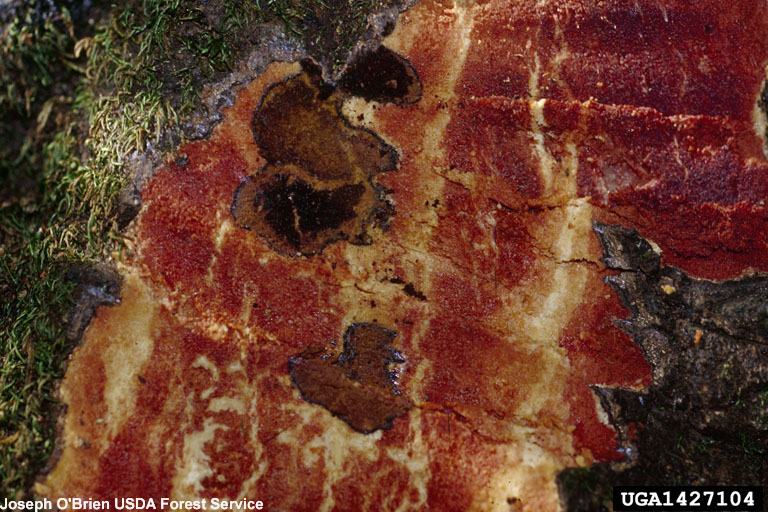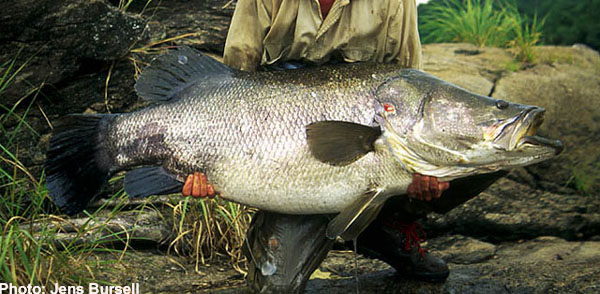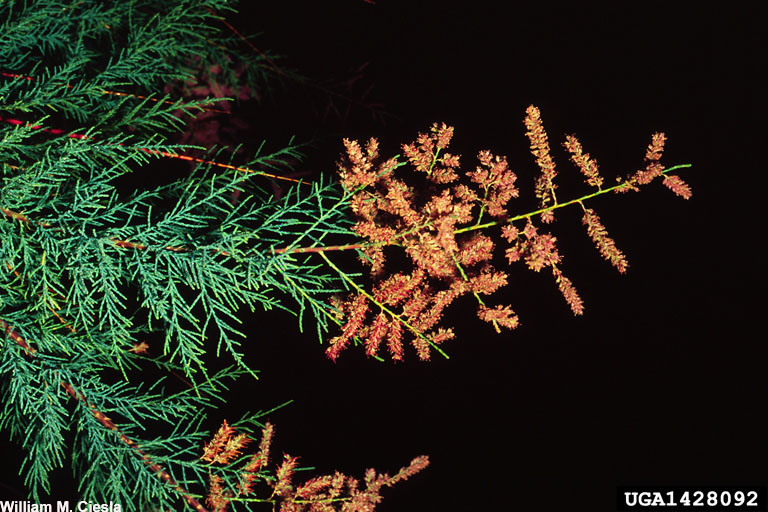Invasive Species
Zebra Mussels

Zebra Mussels are black or brown and white striped bivalve mollusc with byssal attachment to hard substrates. The maximum size is approx. 3 cm long native to the Caspian and Black Seas. They are now established in the UK, Western Europe, Canada and the USA. They compete with zooplankton for food, thus affecting natural food webs. They also interfere with the ecological functions of native molluscs and cause great economic damage.
Sudden Oak Death

Shown above are lesions on the tree, which is one of the signs that the fungus is spreading. This fungus infests several species of oak trees. Infected trees develop bleeding or oozing cankers on the lower trunk. There is no treatment available once trees develop cankers. Shortly afterwards, the fungus is spread by spores, and usually begins to spreads in other nursery material. This fungus causes mortality in a short period of time.
The Nile Perch

The Nile perch is a large, perch-like freshwater predator fish. Also known as the Victoria Perch, it can grow up to 200 kg and two meters in length. It was introduced to Lake Victoria in 1954 where it has contributed to the extinction of more than 200 endemic fish species through predation and competition for food.
Salt Cedar

Shown above is a picture of the Salt Cedar, taken in Glenwood Canyon. Also known as Tamarisk, it is a long-lived shrub or tree. Native to Asia and southeastern Europe, it is now found in the United States and Mexico. This shrub is able to grow in extremely saline soils and is easily disseminated across lands. It can impede the flow of water at high water levels, creating massive flooding problems.
Short-Tailed Weasel

The Short-Tailed Weasel is an intelligent, versatile predator specializing in small mammals and birds. It is fearless in attacking animals larger than itself, and is able to adapt and survive periodic shortages because it stores its surplus of kills. It is generally found “anywhere it can prey” in New Zealand and small European countries.
Wild Goats

Goats have been recognized as "the single most destructive herbivore" introduced to the islands of the world (King, 1985). Goats are herbivores, whose highly varied diet includes plants that are avoided by sheep or cattle, which increases the impact on native vegetation and native animals who use the vegetation for shelter. They easily become feral and can also spread disease to native animals.
Get the world’s most fascinating discoveries delivered straight to your inbox.


